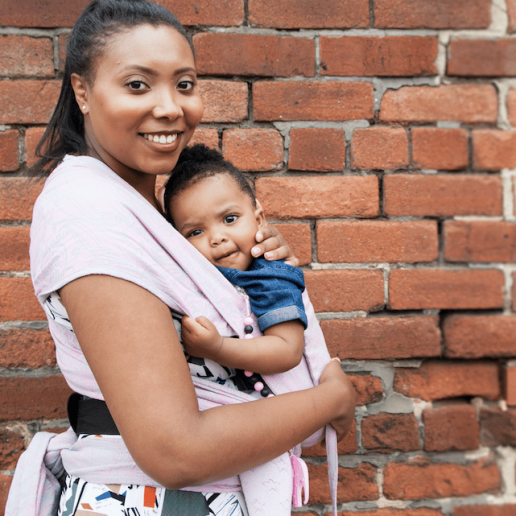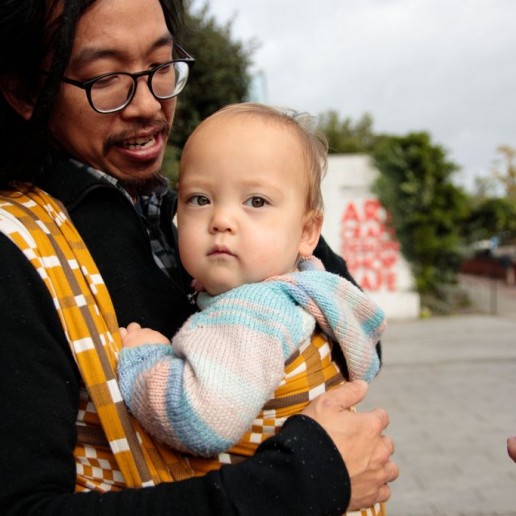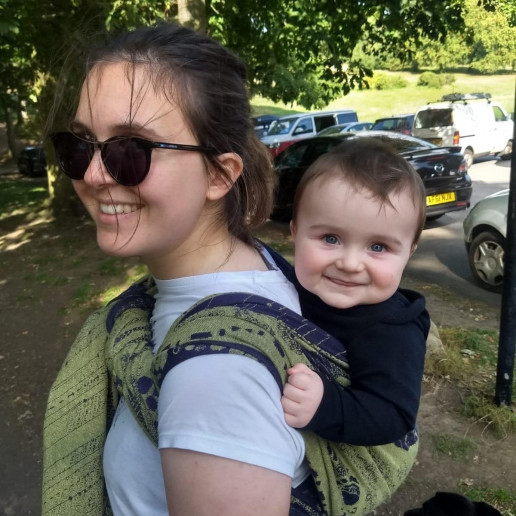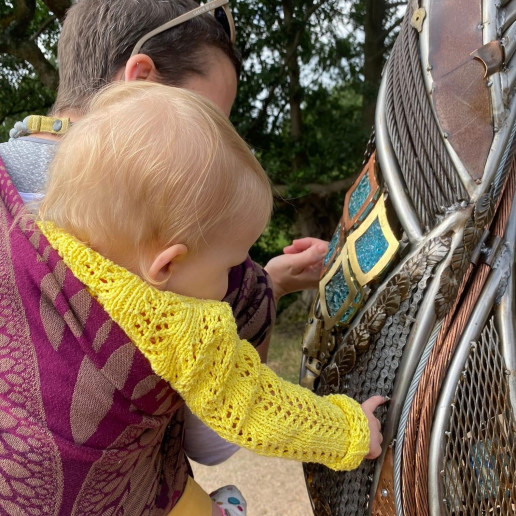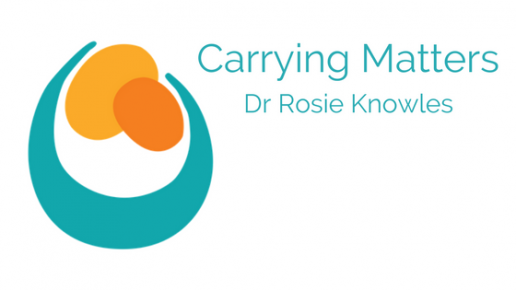Many babies begin to want to see more of the world from their carrier as they grow, and can begin to push against their caregiver when in the sling. Giving them the chance to be "arms out" can be a game changer and make babywearing a much better experience for both. But when can this start?
It is very common for families to find that baby begins to protest at being all cocooned up inside the sling/carrier as they begin to “wake up” from the sleepy stage of the fourth trimester. They can find that at about 6-8 weeks, baby begins to push against the caregiver’s chest and seems to enjoy the carrier less than they used to, can become wriggly and start leaning back so much that a protective hand can be needed (especially in a stretchy wrap).
This can be misinterpreted as a baby “growing out of the carrier”, being “nosy” or disliking it. Sometimes this leads people to believe that baby “needs to see more” and is ready for facing out sooner than is recommended, and an otherwise happy babywearing journey can come to a needlessly early end.
(By the way, if you do have a baby who seems to hate the carrier and cries whenever they are placed in it, read this for help.)
At 6-8 weeks, babies’ eyesight has begun to improve and they can now focus more clearly on faces and objects (about 8-10 inches away, the distance that a caregiver’s face is from theirs when held in arms for feeding/sleeping). This coincides with the 6-8 week fading of newborn reflexes and an increase in muscle strength, control and co-ordination. Babies are beginning to develop hand-eye coordination and motor skills, and want to use these exciting new tools!
Recognising this developmental stage allows us to adapt how we carry them – often at this point we have begun to start holding them on our sides for off-centre carries (keeping them well supported).
Therefore, one option is to use carriers that allow an off-centre position (ring slings are a winner for this!) These move baby away from the central positioning and allow a wider field of vision from further over on the side. Ring slings are supportive enough when used well (with fabric up to the nape of the neck) for both tummy to tummy and for off-centre front carries from birth.
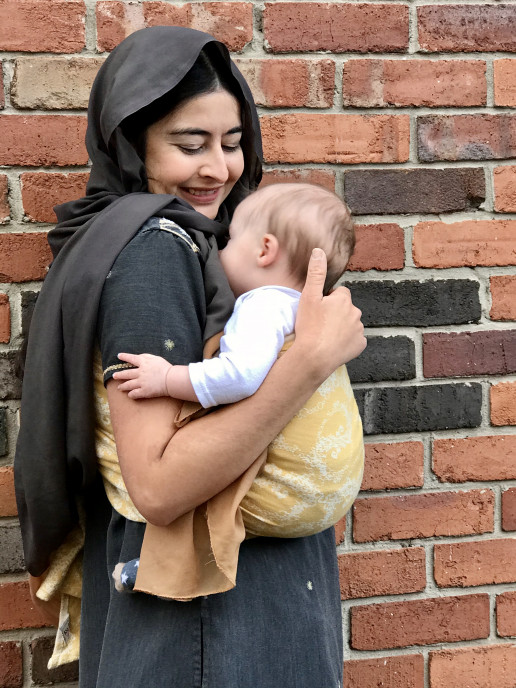
For many, giving baby an arm out of the carrier can be a simple game changer. This works very well with wraps (woven and stretchy), the Close Caboo, and with ring slings, as these can be adapted to fit around baby and parent. It can be harder to do with the more fixed and less-adjustable panels of buckle carriers and meh dais/half buckles, although some are designed to allow their panels to be shortened for small babies, which works nicely for this situation. The age that this is suitable for does depend mostly on the baby’s individual strength and co-ordination, but typically this would be from 8 weeks up.
The key thing with young babies of 8-12 weeks is to ensure they remain well supported even with an arm out. It is wise to ensure the opposite shoulder remains close to the parent, so the wrap/carrier should cover this opposite shoulder. Baby will be able to turn their body towards the free arm and look over that free shoulder, feeling less constrained and more able to see and engage with the world around them. They remain in the ideal parent-facing position to turn back and snuggle in for a nap when they have had enough of the excitement. At this point, their free arm should be popped back inside the carrier again for security, as muscles relax in sleep and slumping can be more likely (always check to see if carrier needs to be retightened).
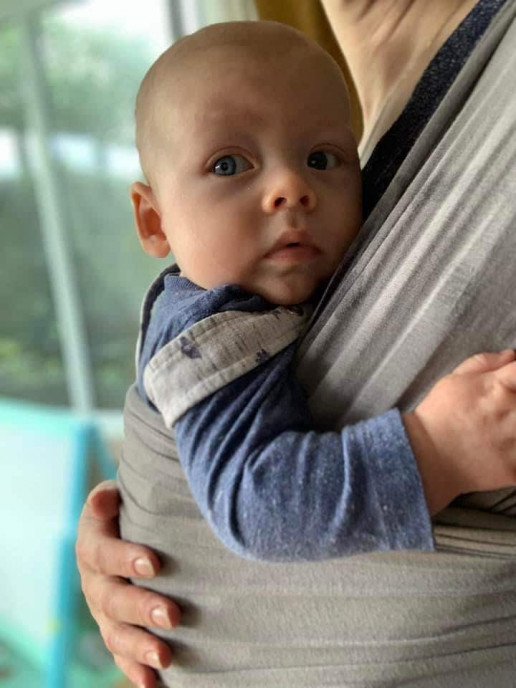
Arm moved back in again with sleep
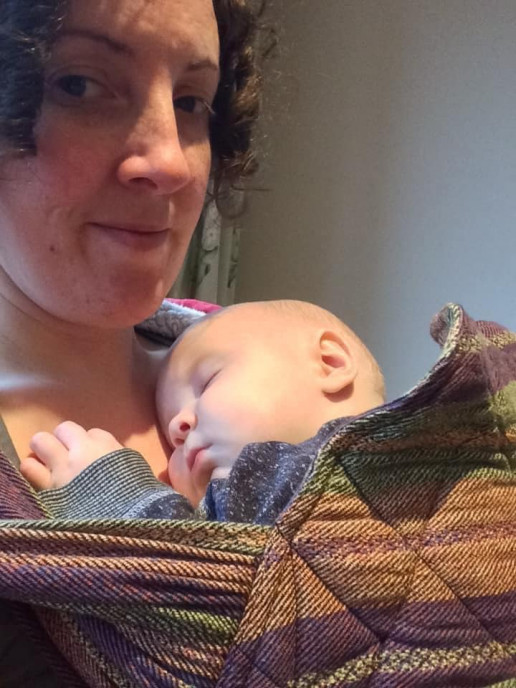
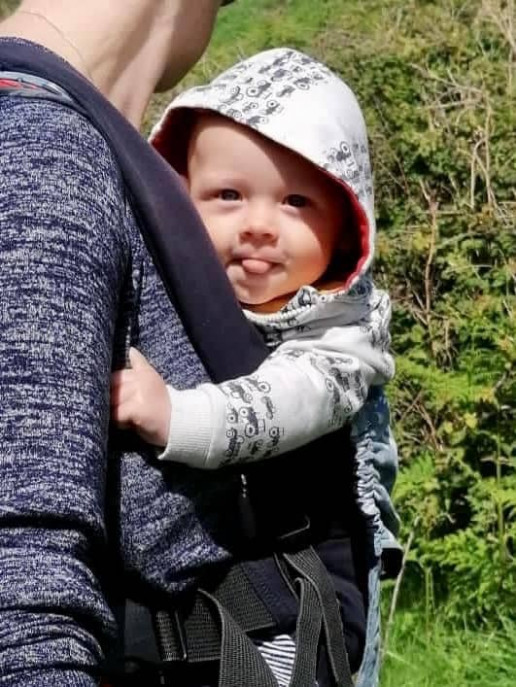
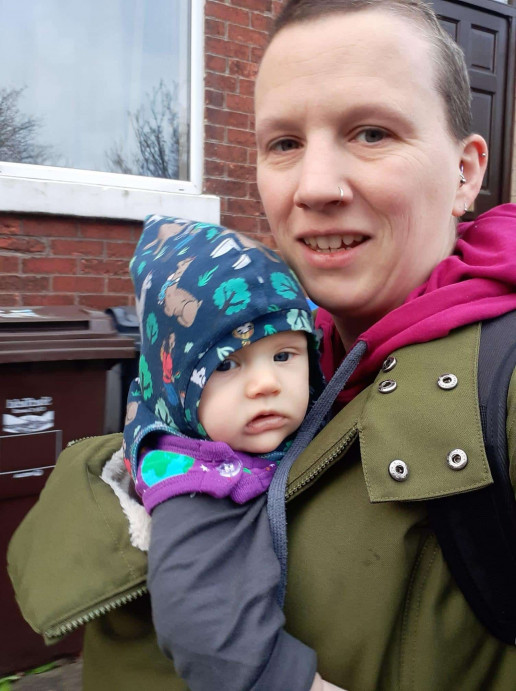
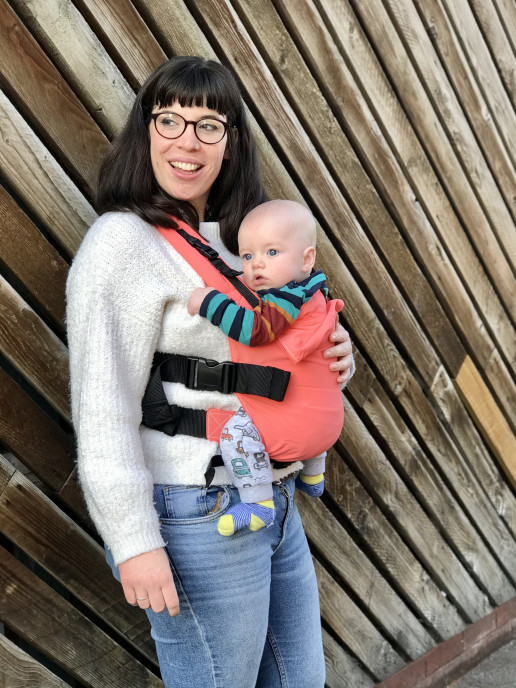
As babies grow in strength and co-ordination, and are able to sustain their own positioning for longer periods of time, they need less upper back and neck support, and having both arms out becomes an option (similar to facing forwards). The timing of this will clearly depend on the individual baby.
Caregivers should be encouraged to monitor for signs of fatigue in their baby – how long this will take varies from child to child – and put their arms back inside the carrier if possible, so shoulders are supported once more and tighten up any loose slack that has developed while baby has been happily waving arms around!
Of course, do be aware of the increased reach of children who have arms out – on the back they can pull at your hair, and also reach for objects a surprisingly long way!
